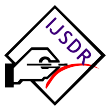Imp Links for Author
Imp Links for Reviewer
Research Area
Subscribe IJSDR
Visitor Counter
Copyright Infringement Claims
Indexing Partner
|
Published Paper Details
|
|
| Paper Title: | APPLICATIONS OF FLUORIDE FOR CARIES PREVENTION IN CHILDREN: AN OVERVIEW |
| Authors Name: | Dr Dasari Ramya , Dr. Polisetty Siva Krishna , Dr. Vatsalya Kommalapati , Dr. H. Aparna Latha |
| Unique Id: | IJSDR2308079 |
| Published In: | Volume 8 Issue 8, August-2023 |
| Abstract: | ABSTRACT: Fluoride has known as an odd arch-criminal who revolves around mouth cleanliness and prevention. Although dental fluorosis is a well-known developmental enamel defect caused by excessive fluoride ingestion during enamel formation and is typically caused by chronic, long-term exposure to elevated levels of fluoride as a result, its role in the prevention of dental caries is deeply ingrained. Since tooth development is reflected in dental fluorosis, high fluoride intake during early maturation and the secretory stage of enamel creation changes protein metabolism, resulting in an un-organised crystal structure and hypo-mineralization. When compared to fluorosis in the permanent dentition, fluorosis in the primary dentition is "rare" or "less severe". This is explained by the fact that the placental tissue regulates the amount of fluoride in the foetal blood and the consumption of breast milk, which has a fluoride concentration of about 0.02 parts per million. Due to the primary dentition's transitory nature, fluorosis is regarded as being of little concern. This best practice informs professionals about the use of fluoride as a tool for preventing and managing dental caries in young patients. The recommended level of fluoride in community water (0.7 parts per million) helps balance the danger of dental fluorosis from excessive fluoride intake during the early years of tooth growth with the risk of dental caries. Based on fluoride levels in the drinking water, other dietary sources of fluoride, use of a fluoridated toothpaste, and caries risk, specific recommendations for dietary supplementation of fluoride are made for children between the ages of six months and sixteen years. Whether administered in a formal clinical environment or at home, the needs of each patient dictate the proper use of systemic and topical fluoride treatments. Fluoride has been shown to be a successful treatment for lowering the incidence of dental caries in infants, kids, teenagers, and people with special needs. |
| Keywords: | Fluoride, Dental caries, Fluoride Varnish, Demineralization, Remineralization, Flouride Supplements, Fluoride toothpaste, Slow-release Fluoride Beads |
| Cite Article: | "APPLICATIONS OF FLUORIDE FOR CARIES PREVENTION IN CHILDREN: AN OVERVIEW ", International Journal of Science & Engineering Development Research (www.ijsdr.org), ISSN:2455-2631, Vol.8, Issue 8, page no.540 - 547, August-2023, Available :http://www.ijsdr.org/papers/IJSDR2308079.pdf |
| Downloads: | 000338720 |
| Publication Details: | Published Paper ID: IJSDR2308079 Registration ID:208216 Published In: Volume 8 Issue 8, August-2023 DOI (Digital Object Identifier): Page No: 540 - 547 Publisher: IJSDR | www.ijsdr.org ISSN Number: 2455-2631 |
|
Click Here to Download This Article |
|
| Article Preview | |
|
|
|
Major Indexing from www.ijsdr.org
| Google Scholar | ResearcherID Thomson Reuters | Mendeley : reference manager | Academia.edu |
| arXiv.org : cornell university library | Research Gate | CiteSeerX | DOAJ : Directory of Open Access Journals |
| DRJI | Index Copernicus International | Scribd | DocStoc |
Track Paper
Important Links
Conference Proposal
ISSN
 |
 |
DOI (A digital object identifier)
  Providing A digital object identifier by DOI How to GET DOI and Hard Copy Related |
Open Access License Policy
Social Media
Indexing Partner |
|||
| Copyright © 2024 - All Rights Reserved - IJSDR | |||






Facebook Twitter Instagram LinkedIn